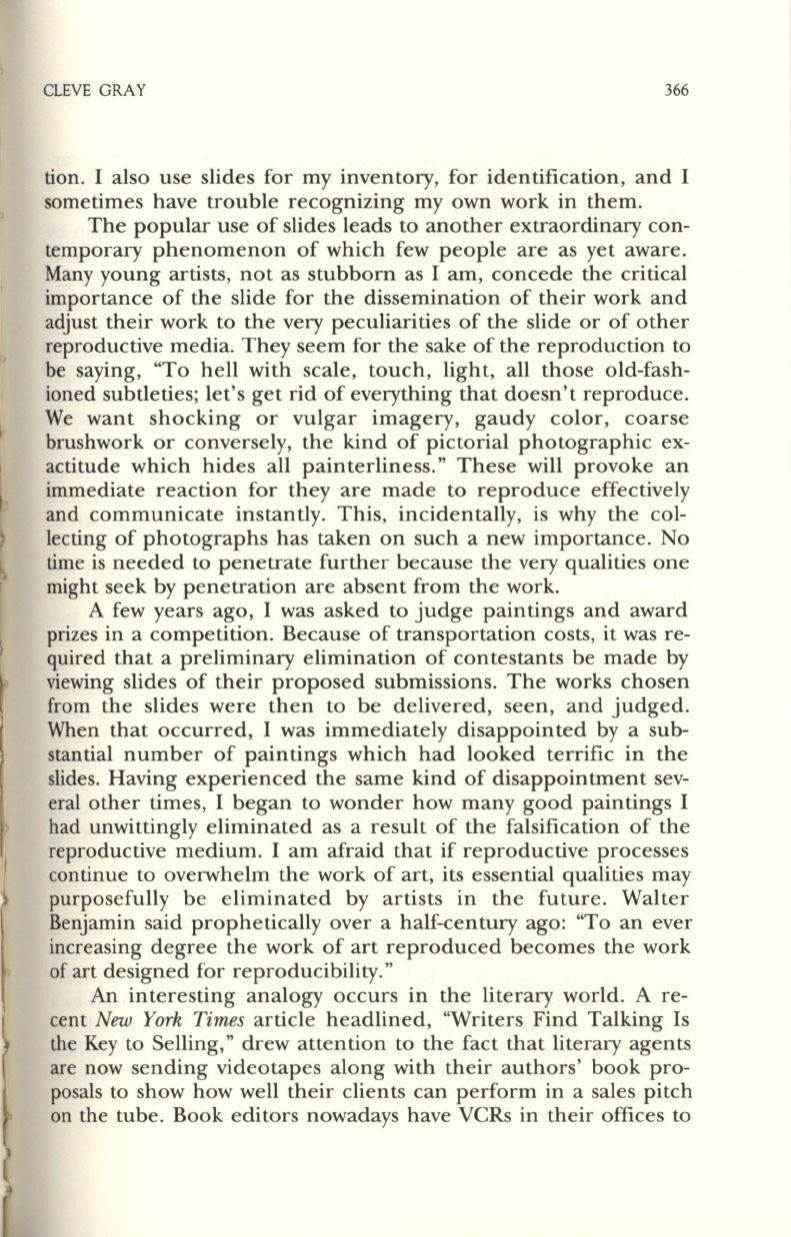
CLEVE GRAY
366
tion. I also use slides for my inventory, for identification, and I
sometimes have trouble recognizing my own work in them.
The popular use of slides leads to another extraordinary con–
temporary phenomenon of which few people are as yet aware.
Many young artists, not as stubborn as I am, concede the critical
importance of the slide for the dissemination of their work and
adjust their work to the very peculiarities of the slide or of other
reproductive media. They seem for the sake of the reproduction to
be saying, "To hell with scale, touch, light, all those old-fash–
ioned subtleties; let's get rid of everything that doesn't reproduce.
We want shocking or vulgar imagery, gaudy color, coarse
brushwork or conversely, the kind of pictorial photographic ex–
actitude which hides all painterliness." These will provoke an
immediate reaction for they are made to reproduce effectively
and communicate instantly. This, incidentally, is why the col–
lecting of photographs has taken on such a new importance. No
time is needed to penetrate further because the very qualities one
might seek by penetration are absent from the work.
A few years ago, I was asked to judge paintings and award
prizes in a competition. Because of transportation costs, it was re–
quired that a preliminary elimination of contestants be made by
viewing slides of their proposed submissions. The works chosen
from the slides were then to be delivered, seen, and judged.
When that occurred, I was immediately disappointed by a sub–
stantial number of paintings which had looked terrific in the
slides. Having experienced the same kind of disappointment sev–
eral other times, I began to wonder how many good paintings I
had unwittingly eliminated as a result of the falsification of the
reproductive medium. I am afraid that if reproductive processes
continue to overwhelm the work of art, its essential qualities may
purposefully be eliminated by artists in the future. Walter
Benjamin said prophetically over a half-century ago: "To an ever
increasing degree the work of art reproduced becomes the work
of art designed for reproducibility."
An interesting analogy occurs in the literary world. A re–
cent
New York Times
article headlined, ''Writers Find Talking Is
the Key to Selling," drew attention to the fact that literary agents
are now sending videotapes along with their authors' book pro–
posals to show how well their clients can perform in a sales pitch
on the tube. Book editors nowadays have VCRs in their offices to


